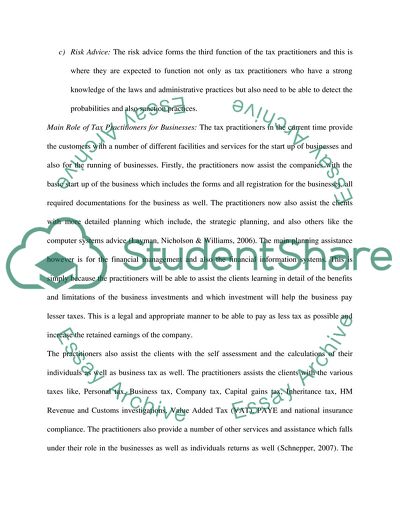Cite this document
(“Role of Tax Practitioners Assignment Example | Topics and Well Written Essays - 2500 words”, n.d.)
Role of Tax Practitioners Assignment Example | Topics and Well Written Essays - 2500 words. Retrieved from https://studentshare.org/finance-accounting/1726642-taxation
Role of Tax Practitioners Assignment Example | Topics and Well Written Essays - 2500 words. Retrieved from https://studentshare.org/finance-accounting/1726642-taxation
(Role of Tax Practitioners Assignment Example | Topics and Well Written Essays - 2500 Words)
Role of Tax Practitioners Assignment Example | Topics and Well Written Essays - 2500 Words. https://studentshare.org/finance-accounting/1726642-taxation.
Role of Tax Practitioners Assignment Example | Topics and Well Written Essays - 2500 Words. https://studentshare.org/finance-accounting/1726642-taxation.
“Role of Tax Practitioners Assignment Example | Topics and Well Written Essays - 2500 Words”, n.d. https://studentshare.org/finance-accounting/1726642-taxation.


